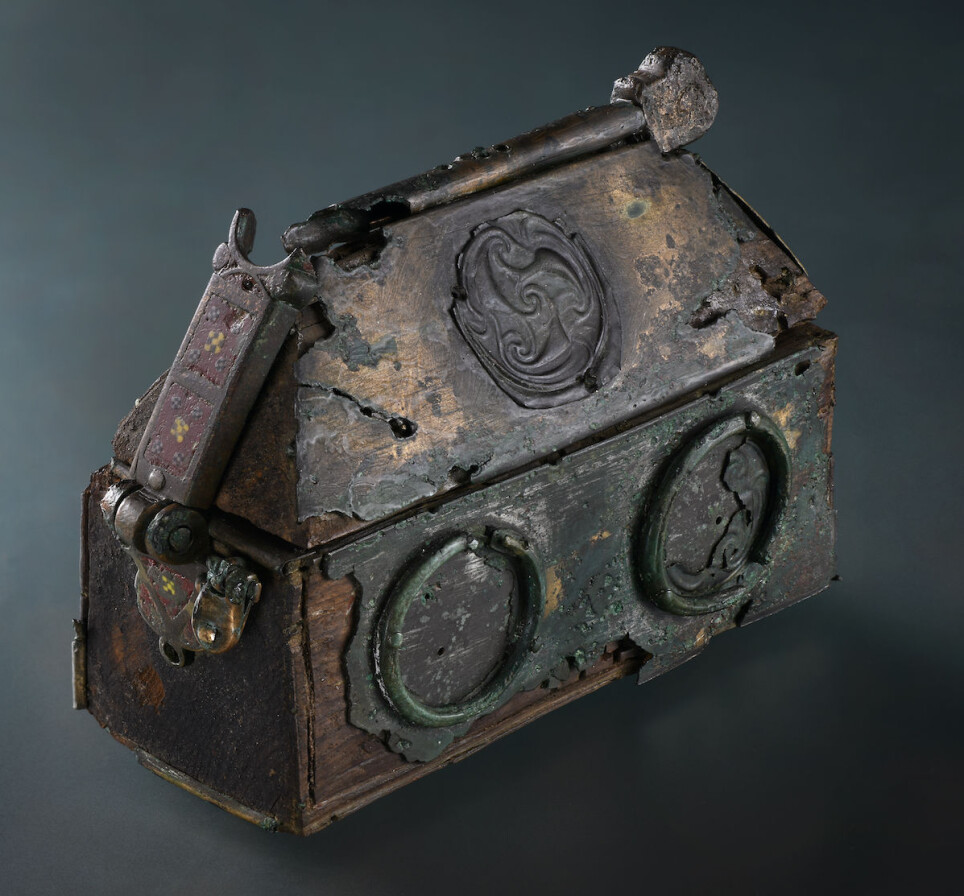THIS ARTICLE/PRESS RELEASE IS PAID FOR AND PRESENTED BY NTNU Norwegian University of Science and Technology - read more

Viking raiders stole this box. But the real surprise is what they did with it.
PODCAST: What a mound of sand, some leftover nails and the box itself tell us about the Viking raiders who stole it — and what they did with it when they brought it back to Norway.
It’s no bigger than four decks of cards stacked one on top of the other — a tiny box raided from an Irish church. In Ireland, the box, a reliquary, held the holy remains of a saint. But when it was stolen by Viking raiders and brought back to Norway, they did something unusual with it.
Instead of breaking it into bits and making jewellery out of it, they kept it intact.
“This object is important because it was kept intact, we can identify it very clearly as what it is and what it was,” Griffin Murray, a lecturer in the Department of Archaeology at University College Cork, said in the new episode of 63 Degrees North, NTNU’s new English language podcast.
A time machine
The reliquary, or shrine, is extremely rare, says Aina Heen-Pettersen, a PhD candidate at NTNU who has studied the shrine as part of her research.

It was first discovered by a farmer in Overhalla, north of Trondheim, in 1906. He reported it to the museum in Trondheim, and an archaeologist, Theodor Petersen, came to the farm in 1907 to examine the setting where it was found.
As Petersen documented the find, he realized the reliquary had been buried in a grave that contained both a man and a woman. The placement of the reliquary indicated that it had been buried with the woman, Heen-Pettersen said.
“It is possibly one of the most rare and special Christian objects that travelled across the North Sea,” she said.
Dangerous voyages needed special rituals
Although popular culture rarely portrays Viking journeys as being dangerous, they were, in fact, very risky. There was the danger of shipwreck, diseases and violence, Heen-Pettersen said.
“While the sea was both a primary food source and a vital means of communication for the Vikings, it is clear that the sea, especially the open sea, was recognized as a potentially dangerous force, which represented a constant challenge to the seafarers,” she said.
And that may explain why the reliquary was never broken up. But to learn more how the Vikings may have used the reliquary — and how archaeologists have puzzled this all out — you’ll have to listen to the podcast.
See more content from NTNU:
-
Social media is connected to cyberbullying – but not how we thought
-
Forskere ved NTNU får nesten 24 millioner av EU for å lage nye strømomformere
-
This helps the youngest children enjoy school more
-
Can we tap the ocean’s power to capture carbon?
-
Researchers have uncovered major problems in Norway's salmon industry
-
Why ChatGPT is bad at imitating people





































